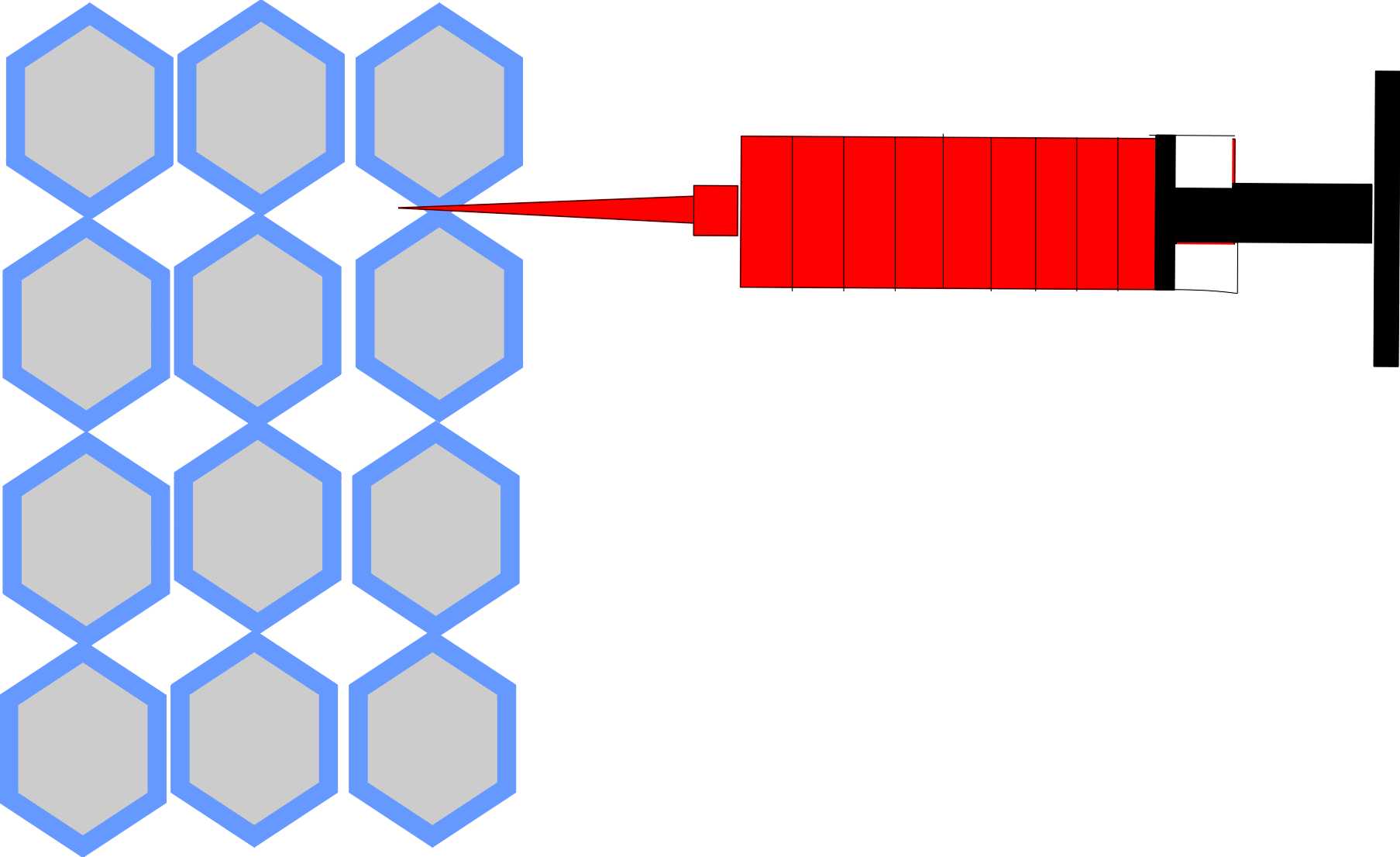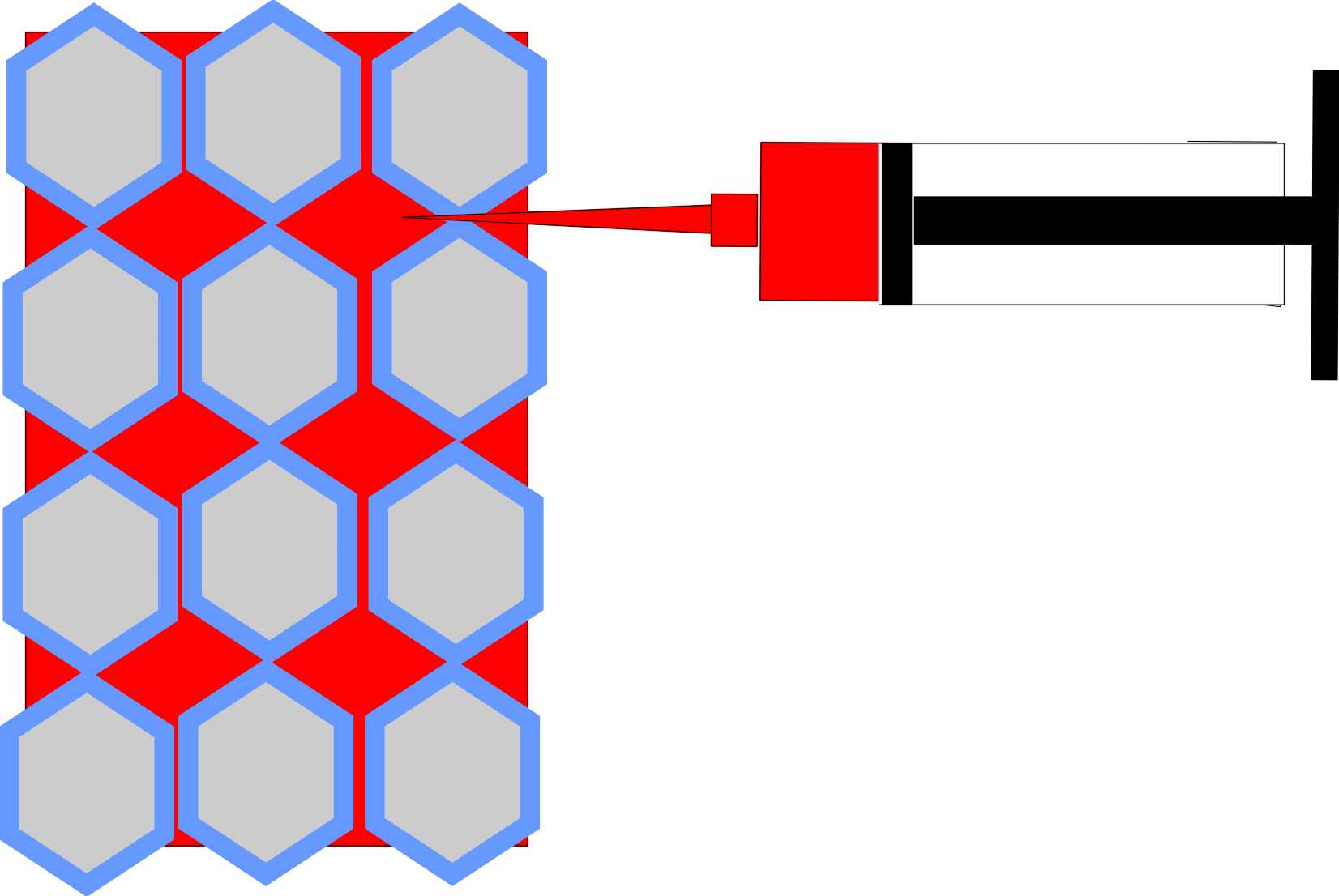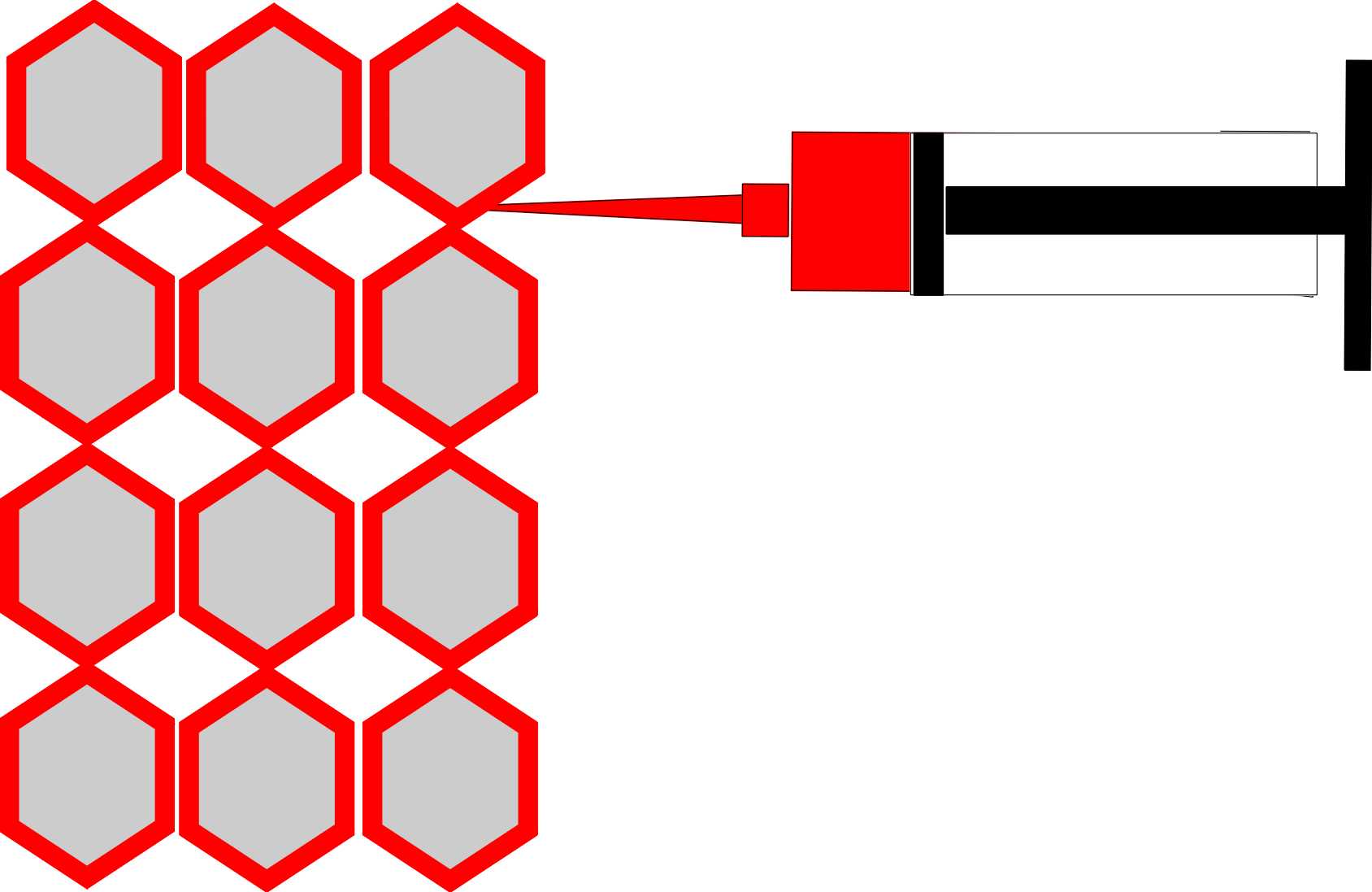Polymer impregnated wood
Since
wood is typically a porous material the idea of impregnating wood with
polymer has been an are of great interest

The
cellular structure of wood has a honeycombed type morphology, albeit not
this neat but you get the idea.

The
idea being to inject the wood matrix with polymer precursor either monomeric
or oligomeric.

and
then curing the material free-radically to form a polymer network inundated
amongst the plant tissue.
The hope
being that a variety of properties will be effected, such as the water
and chemical resistance, decay resistance, and of course improvement of
structural properties.
It has been shown
in many cases with a variety of woods, polymer precursors, and curing methods
that this sort of treatment does indeed work!!! To see more click here.
However it has
also been shown that simply inundating the wood tissue with polymer is
not the route to materials with synergistic properties (properties exceeding
that of either component) with respect to specific properties.

What
has been shown to yield synergistic properties has been by inundating the
cell walls with a polymeric material. This is done by picking a polymeric
system that is more compatible with the cellulosic matrix.
What is
meant by specific properties is the structural properties normalized by
the density. It has been shown in other studies that a route to achieving
good synergistic properties involves not just the uptake of a monomeric
species into the wood but specifically into the cell walls.
This is performed by picking a monomeric material that is more compatible
with the makeup of the cell walls. Since the cell wall is made up
primarily of cellulose it is easy to see that a more hydrophillic type
material would interact more specifically with the cell wall. To
learn more of this technique click here.
Return to wood main
page.



